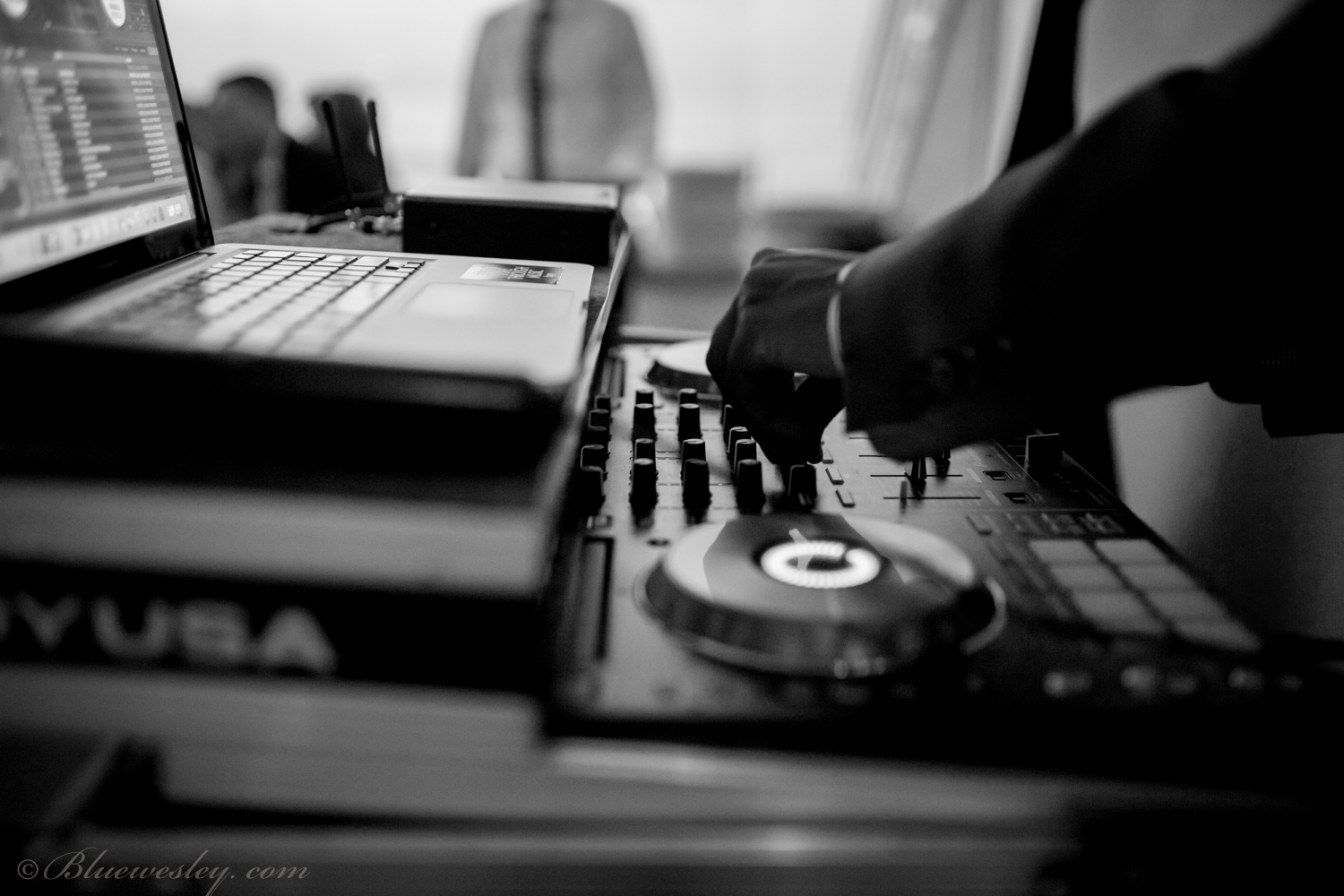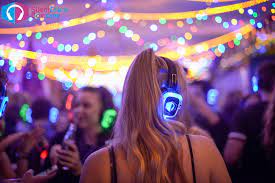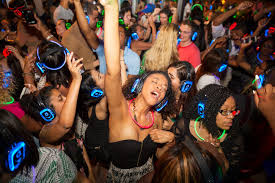Blog
How Silent Discos Are Reinventing Clubbing, One Pair of Headphones at a Time

No longer solely the pastime of alcohol-fueled twenty-somethings, clubbing is taking a different form as a family-friendly gathering where the listeners control the DJ. But what makes a quiet party appealing? Claire Stern investigates the dancing revolution.
By Claire Stern
It’s 8:30 on a Sunday night in Midtown Manhattan, and while the rest of the city is winding down, 100 revelers are just getting the party started—but they’re hardly making noise. To my left, a crowd of people with headphones beaming fluorescent green furiously gyrates while mouthing the chorus to “Rather Be” by Clean Bandit. Straight ahead, a significantly smaller circle with bright red-colored headphones hums the hook to James Brown’s “Papa’s Got a Brand New Bag.” And all around, an unmissable sea of blue does the dougie to Cali Swag District’s smash-hit “Teach Me How to Dougie.” Three minutes later, the songs have changed, thanks to a trio of DJs manning three distinct booths, and so too has the ratio of colors.
I am, of course, at a quiet party. For the uninitiated, a quiet party, or “silent disco” as they’ve come to be known, is a surreal social experience in which people dance to music via distributed wireless headphones. In lieu of one unified speaker system, three different songs are sent simultaneously to each receiver. Participants can choose to listen to one channel, or toggle between the three stations. “The people control the DJ—not the other way around,” says William Petz, founder and CEO of a Quiet Events New York-based party equipment rental service and event management company. “You don’t need to find friends that like one specific genre. You have the ability to listen to all different types of music at the same party.”

Though silent discos have been around for almost 20 years, there’s been a significant growth in popularity in recent months. The concept was originated by eco-activists in the early ‘90s as an effort to minimize noise pollution, and became widely known in 2005 when it was introduced at the Bonnaroo Festival For a long stretch of time, the parties were relegated to underground warehouse parties and outdoor events in rural areas. Now, most major music festivals, including Coachella, Bonnaroo and The Governors Ball have designated silent disco stages, and there are a handful of companies, including Quiet Events, that are producing experiences for mainstream audiences.
The silent aspect definitely has its advantages. For one, partygoers not only control the song—they control the volume, so they can avoid the unpleasant ear damage that comes after a long night of partying. They also don’t have to worry about losing their voice from screaming at another person in an attempt to be heard. At a silent party, if you want to have a conversation, you can take your headphones off and have a conversation. “It’s an instant icebreaker,” adds Petz. “If you see someone listening to a song that you’re listening to, you can start a dialogue.” And there’s a large amount of interaction to be had: Quiet Events hosts three to four events per week, and an additional five to ten for which they provide rental equipment. Some host up to 2,000 people.

So, who typically attends a silent disco? According to Quiet Events’ statistics, their target market is 25 to 37-year-old young professionals. But some large-format public events encompass a wider age range. Sunday night’s get-together was a healthy mix of twenty-somethings, couples, and even families. Michelle Debuccio, in town visiting from Texas, was there dancing with her three teenage children in tow. Moshe Hamaoui, an engineer from Long Island, was attending his second quiet event in two weeks, and touted its benefits. “You get to choose your own music, and there’s more room to move around,” he says. “With more space, you tend to dance more crazily and have more fun.”
“It’s an ‘everyone’ dance party,” says Castel Valere-Couturier, founder of Sound Off, another New York-based silent events company. “Most of the time people are separated by their musical tastes when they go out. We’re able to bring them all together by giving them the ability to choose their song right on their headphone.” Just two weeks ago, DJ, model, and fitness entrepreneur Hannah Bronfman oversaw her first-ever silent disco at StyleWatch and Revolve’s Party to celebrate the monthly magazine’s fall fashion issue on the High Line in N.Y.C. “I have to be hyper-aware of the music and transitions,” she says. “I’ve never been on either side of a silent disco before, so it’s definitely a new experience, but a fun one.” Throughout the duration of her set, if no one’s headphones lit up to a particular song, Bronfman knew to drop it from her playlist.

The music selection at silent discos ranges from ‘80s New Wave to Top 40 hits, and the setting has become equally varied. People have rented equipment for weddings, bar and bat mitzvahs, birthdays, outdoor movies—even conferences at the United Nations, where each channel features a different language. Sound Off has pioneered the use of their headphone technology for special fitness and experiential marketing events. And with the advent of social media, even more people are being introduced to the experience. “The curiosity on the other side of the phone is the same as it is for everyone in the crowd who doesn’t have headphones on,” says Valere-Couturier. “They want to know how they can get in on the fun.” Adds Petz: “It’s different, unique, and a bit faddish, but you realize it’s the best party you’ve ever been to.”


General
no comments